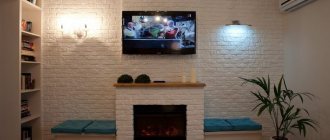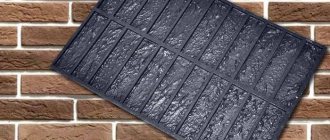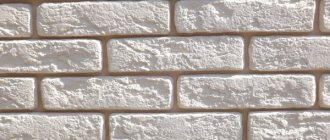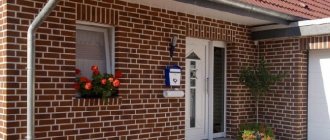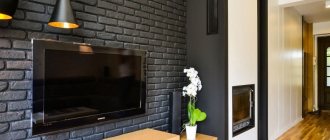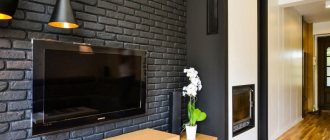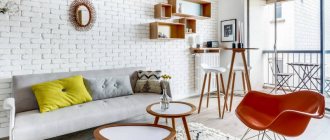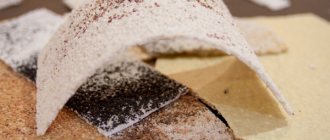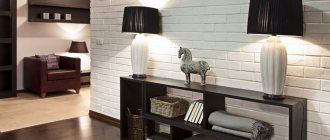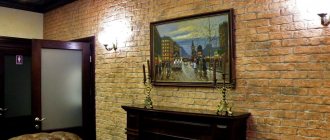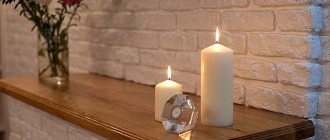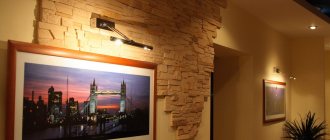Having a durable and beautiful home is the dream of every person. Modern industry produces various types of facing bricks that can be used to cover any structure.
There is a fairly wide range of colors for facing bricks, so each owner can choose the material to their liking. The outer covering of the brick may have a decorative pattern or glaze.
The main difference between facing brick and ordinary working brick is its perfectly smooth side surfaces. Also, the undeniable advantage of such a building material is its correct geometry; the front side does not contain cracks, chips or other signs of deformation and defects. All its sides are strictly perpendicular.
Cladding buildings with it is the most reliable and durable.
Our offers
We offer to buy high quality facing bricks in any quantity you need. At our base you can purchase facing bricks of any types and colors. Having a large selection allows the client to choose the material that will most fully satisfy their needs and wishes.
To get acquainted with the offered product, you can open the corresponding section of the site, where a brief description of the offered materials is given. To clarify any questions you may have, you can contact our specialists directly at the company’s office or call. Phone numbers are listed on the main page of the site.
We guarantee high-quality service and an individual approach to each client.
home⇒ construction mat⇒ bricks and blocks⇒ bricks
A typical facing brick of size 1 NF has dimensions: 250x120x65 (mm).
There are a huge number of types of facing bricks; a list of the most common models is presented below.
- ceramic single: 250 (mm) x 120 (mm) x 65 (mm); split hollow (bonded): 188 (mm) x 88 (mm) x 63 (mm); torn facing: 250 (mm) x 100 (mm ) x 65 (mm); torn facing (bonded): 230 (mm) x 100 (mm) x 65 (mm); American: 250 (mm) x 60 (mm) x 60 (mm); handmade ceramic: 188 (mm) x 88 (mm) x 63 (mm).
Important: products that differ in size in one direction or the other by no more than 10% from the 1 NF format are classified as single.
Dimensions of decorative bricks:
The dimensions of decorative bricks (torn or embossed) correspond to the dimensions of the standard one, with the exception of the error on the embossed edge.
The dimensions of the facial sample that are used for non-standard work are as follows:
- 250 (mm) x 80 (mm) x 65 (mm);290 (mm) x 140 (mm) x 85 (mm);250 (mm) x 60 (mm) x 65 (mm).
Among the materials for exterior finishing, facing brick is very popular. It is also called façade or front. It got its name due to the fact that it gives the building a more aesthetic appearance.
In addition to its appearance, the cladding of the house gives the building increased heat and sound insulation, and increases resistance to weather conditions. This plays an important role in the harsh Russian climate. Facing brick has many characteristics: color, strength, frost resistance, it can be hollow or solid, in size - single, one-and-a-half or double.
Facing bricks are used for cladding building structures. There are different color shades of the material, which depend on the composition of the clay used in production.
Red facing building brick is considered traditional. At the same time, brick comes in white, orange, brown or yellow colors. The color of the brick does not affect its technical properties, so you can choose any of the shades you like.
Features of the installation process
Concrete, brick, wooden and plastic surfaces are decorated with decor. The bricks are laid in a checkerboard pattern. This type of “masonry” is considered classic and looks impressive.
For installation work you will need the following tools and materials:
- glue;
- level;
- spatulas;
- plumb line;
- varnish;
- hacksaw;
- brush;
- construction gun for installation work.
The wall or other surface must be plastered and leveled. It is recommended to make grooves in the plaster that has not yet dried, which will ensure good adhesion of the adhesive materials. The gypsum masonry must be level, and for this, when laying the first row, use a plumb line and a perpendicular.
Laying gypsum bricks
The glue is applied in an even layer on one side of the brick and on the wall. When performing seamless installation, excess glue must be removed immediately, without allowing it to dry. The method of laying with a seam requires the use of grout and special beacons.
The grout mixture should be grainy and sticky. At the end of the work, the seams are treated with an adhesive composition. The finished “masonry” must stick securely: you need to wait a few days before loading the wall with paintings, lamps and other decorative elements.
Related video: Making decorative bricks
Publications on the topic
Advantages of decorative bricks for interior decoration
How to lay different types of brickwork
Characteristics and advantages of clinker bricks
Characteristics of facing bricks
BrandThe brand of a facing brick indicates its strength and is designated by the letter “M”. The number following the letter is the degree of strength. The higher the number, the greater the load the brick can withstand.
Depending on the type of construction, a different brand is used. When constructing multi-story buildings, it is wiser to use M150 facing bricks - it can withstand a load of 150 kg/sq. cm.
For cladding cottages, M100 brick is sufficient. The maximum load in this case is 100 kg/sq. cm.
Size
The dimensions of facing bricks are standard and regulated by GOST. Each batch of material must be supplied with certificates, which guarantees that the bricks comply with accepted standards. Single facing bricks with dimensions of 65 (h) x 120 (w) x 250 (d) mm are in great demand in construction. One-and-a-half (88x20x250 mm) and double (138x120x250) bricks are also often used. One and a half brick is also called thickened.
Gothic Middle Ages in a separate apartment
To create the atmosphere of a medieval castle, we will need the same aged brick, only the traces of “fire” should be abandoned. A brick wall in the interior, painted dark gray, looks brutal. The paint layer is applied thickly so that it fills the seams unevenly.
Brick wall in the interior, painted gray. Photo
In addition to the walls, columns and half-columns and pointed arches are trimmed with brick. This finish is suitable for any room, from the kitchen to the bedroom. In high rooms (dining room or kitchen), you can tile the vaulted ceiling with brick tiles. This will create the illusion of an old wine cellar. By the way, it is easy to arrange cells for storing bottles in the walls.
Vaulted ceiling trimmed with decorative brick. Photo
Vaulted ceiling in the kitchen, decorated with decorative bricks. Photo
Decorative brick in the interior of the living room. Photo
Gothic style consists of a combination of rough bricks with luxurious furniture, decorated with elaborate carvings and artistic forging. Huge chandeliers and massive candelabra will enhance the effect. Portraits of ancestors and heavy dark curtains will complete the creation of a medieval fairy tale.
Hollow and solid facing bricks
Solid facing brick has high strength and is not afraid of negative temperatures and pressure. This allows it to be used for cladding structures that have a large load (internal and external decoration of walls, columns, fences). The use of solid bricks often requires additional insulation. Hollow brick has a larger number of air chambers: their volume reaches 45% of the total volume of the product. The voids can be closed on one side or pass through; they come in various shapes - round, oval, square.
Hollow brick is lighter than solid brick and, as a result, less durable.
However, its main advantage is the guarantee of heat preservation. That is why hollow bricks are in demand when filling frames in multi-story buildings. With its help, masonry partitions are erected and lightweight external walls are designed.
Design options
Decorating walls with white bricks is an excellent solution for many interior styles. Thanks to this design, you can make the environment fresher, brighter and more interesting. Let's take a closer look at what style ensembles white brickwork will look especially attractive and organic.
Loft
In the interiors of this “attic” style, brickwork is used most often. It can be not only white, but also gray, red, brown or other attractive shade. Interiors in this vein are very popular today. They are characterized by open communications (for example, pipes), combinations of furniture designed in different styles, and the presence of natural and lightly processed materials. For example, against the background of white brickwork in a loft interior there can be either “shabby” wooden tables and chairs, or expensive leather sofas, combined into a single tandem.
Country
This is another popular style in which brick walls look harmonious. Moreover, it is permissible to design the interior in a similar vein both in a private house or cottage, and in an ordinary city apartment. Against the background of brick finishing in such an environment, pieces of furniture made of natural and lightly processed wood will look impressive. Elements with ethnic notes can be used as decoration. In a single ensemble, such components allow you to create a very cozy and “warm” interior that you won’t want to leave.
Gothic
Brickwork looks great in Gothic-style interiors. In such environments, it is recommended to install only natural stones of the highest quality. Usually only one wall in the room or part of the wall is finished in this way. It is permissible to complement columns and arched bases with decorative bricks.
Minimalism
Today, a restrained modern style called minimalism is incredibly popular. In such an interior, brickwork looks best not only in white, but also in brown or red shades. Against the background of such coatings, furniture designs in gray, black or silver shades, as well as lighting fixtures with chrome and metal parts, will look great.
The difference between clinker brick and ceramic brick
Clinker and ceramic bricks differ in their characteristics: weight, strength, moisture and frost resistance.
This is due to the use of different types of clay and different firing temperatures. In the first case, refractory plastic raw materials are used, and in the second, low-melting, moderately plastic raw materials are used. When firing clinker facing bricks, the upper temperature mark is 1600 Cº, and for “ceramics” - 1000 Cº.
The weight of ceramic facing bricks is significantly less than clinker bricks. As a result, the strength of ceramic bricks is 2 times lower than clinker bricks.
The latter can withstand a load of at least 300 kg/sq. cm. Clinker facing bricks resist moisture well.
The moisture absorption rates are only 6%, compared to ceramic, which has the same value twice as high – 12-14%. Frost resistance. Clinker bricks can withstand up to 100 freezing cycles, while ceramic bricks can withstand no more than 50.
Thus, for harsh climatic conditions, it is more rational to give preference to clinker bricks.
Country
In country style, brick as one background wall will look perfect in the kitchen. Rooms are often decorated with brick inserts - along arches and doorways. The main feature of country style is its lightness, ease and simplicity
And it is very important not to disturb this harmony with a rather heavy brick
However, if there is room for a fireplace in the room, then a brick wall near it will add zest to the interior. Small brick inserts will go well with a simple small floral print on wallpaper and textiles. The main companion of country style is wood. Wooden floors and rustic furniture will add a real rustic feel to the interior.
Where to buy brick?
You can buy facing bricks in St. Petersburg (SPb) of any brand at.
We have a huge selection of manufacturers, colors and sizes. Brick is always available in stock. Promotions are held periodically!
You can check the availability and cost of a specific brand of facing brick by calling 336-23-96 and 327-82-82.
- Date: 03/02/2015 Comments: Rating: 16
In modern house construction, various materials are used to construct walls, which do not always look aesthetically pleasing. Houses can be slag-filled, panel, frame, made of monolithic foam concrete, built from blocks.
The appearance of such houses requires facing work, for which facing bricks are often used, having both standard and non-standard sizes approved by GOST. A facing brick can be single, one-and-a-half or double, solid or hollow, and its size and weight will depend entirely on its characteristics. The walls of houses lined with this finishing material give buildings a beautiful appearance, increase the thickness of the walls and make the building warmer.
Facing bricks are used for decorative purposes.
For lovers of classic walls, red ceramic bricks are offered for cladding, having standard, identical dimensions for all products, approved by GOST.
Decorative types of cladding can be used to decorate walls to imitate natural stone.
To do this, choose modern sand-lime bricks, which are produced in various colors. Often, facing silicate has a special type of texture that imitates crushed natural stone. A house decorated with this type of cladding amazes with its unexpectedly magnificent appearance.
Properties of facing bricks.
Manufacturers may offer a standard white silicate intended for finishing. For lovers of colored walls, smooth hollow silicate bricks painted in various colors with iron oxide are offered. The dye used in silicate products is so durable that they do not lose their color when exposed to sunlight, even over time.
The brick will retain its original shade for a long time and delight with its beauty. The ideal lines and internal cavities of the hollow, lightweight, and decorative bricks help create a finish that looks flawless on the outside. Each type offered by the manufacturer has its own positive unique properties that you need to be able to take advantage of.
Matching Styles
Decorative brick, no matter what material it is made from, is suitable only for certain design styles. It is often used to decorate loft-style rooms. This is almost ideal in this case: it is difficult to find a better way to imitate an old-fashioned brick wall. If everything is done correctly, you get the feeling that what is around is not modern housing, but a building built at least in the first half of the twentieth century (if not earlier)
It is important to understand that even the most carefully designed loft is visually aggressive and can become tiring over time.
Therefore, the design must be diluted:
- floor rugs in rich colors;
- flower arrangements;
- expressive upholstered furniture.
You should not assume that decorative brick is suitable only for houses decorated in the loft style. Where owners prefer country or its various antique-style options, this material can also be used. In this case, use the lightest possible brick, trying to lay it as beautifully as possible. This is not surprising, because the concept is also different - now the premises are decorated not like an “old factory or warehouse”, but like a cozy rural house.
To enhance this impression, you can use massive beams made of dark natural wood. But it is not recommended to introduce any artificial details into the composition; they will immediately disrupt the integrity of the country interior. A similar style can be used for a kitchen apron and for walls in separate rooms. The use of decorative brick is also appropriate in high-tech style. But the approach, of course, should be different.
Decorative brick can also be used in the English style. Here, rough, emphatically rural material will not work. It is necessary to use carefully made blocks that will be ideally combined with natural wood. The English room is made in a single color scheme. This circumstance must be taken into account even when choosing decorative elements for framing the fireplace.
